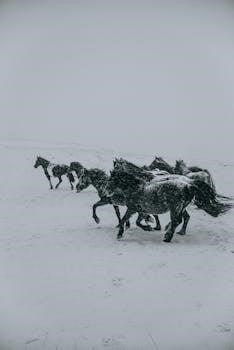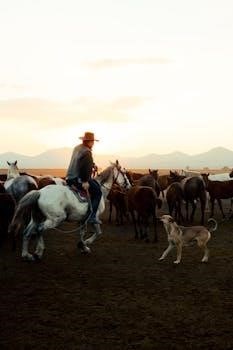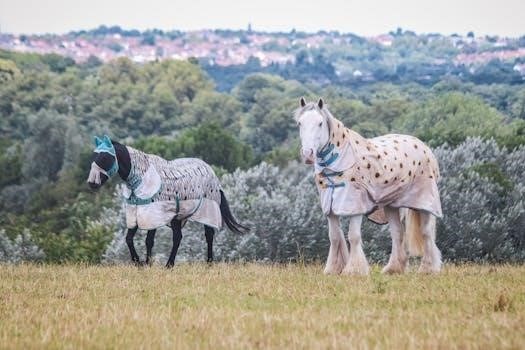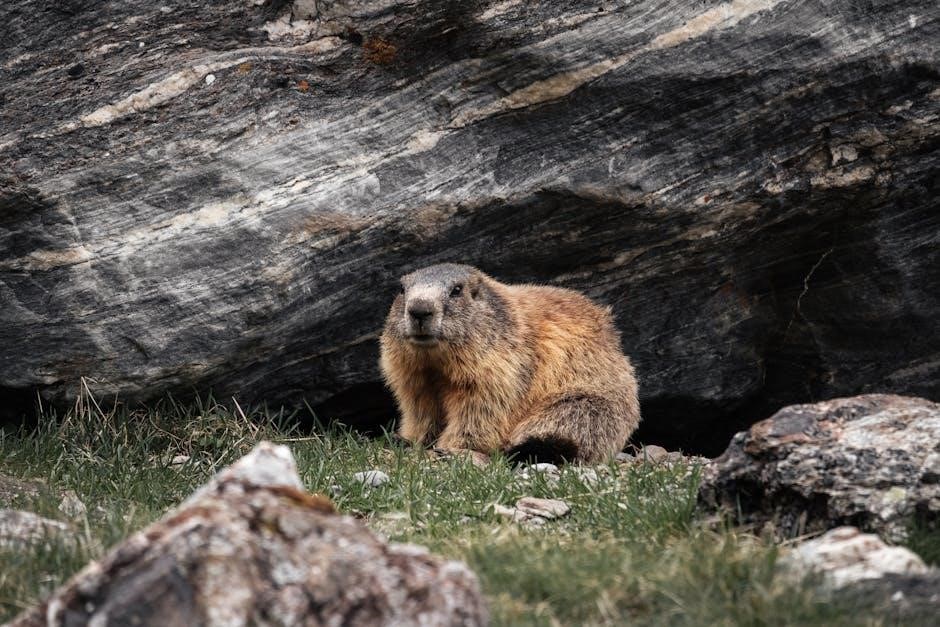When temperatures drop, the question arises⁚ should you blanket your horse? This guide explores the factors influencing that decision, including weather, coat condition, age, and stabling arrangements. Understanding these elements is key to equine comfort.
Understanding the Basics of Horse Blanketing
Horse blanketing isn’t always straightforward; it requires understanding several key factors. A horse’s natural coat is designed to withstand temperatures below 30 degrees Fahrenheit, so blanketing isn’t always necessary. However, factors like age, health, and whether a horse is clipped can influence the need for a blanket. Consider the horse’s access to shelter and its ability to maintain body weight during colder months. Blankets are categorized by weight, indicating insulation. Manufacturers typically provide guidelines for blanket selection based on coat, condition, environment, and management.
Ultimately, the decision depends on individual circumstances and careful observation of your horse’s comfort.

Factors Influencing Blanketing Decisions
Several elements determine whether to blanket a horse. These include the horse’s natural coat, age, overall health, and whether it has been clipped. Understanding these factors is crucial for making informed blanketing choices.
Horse’s Coat and Natural Thermoregulation
A horse’s natural coat is designed to withstand temperatures as low as 5 degrees Fahrenheit. Horses possess remarkable thermoregulation abilities, utilizing multiple body systems to maintain a stable internal temperature. Their winter coat provides insulation by trapping air, and a healthy horse can efficiently regulate its temperature through shivering and adjusting blood flow.
Before reaching for a blanket, consider the thickness and condition of your horse’s coat. Horses with heavy winter coats may not require blanketing until temperatures drop significantly below freezing. Understanding your horse’s natural ability to stay warm is crucial in making informed decisions about blanketing. Over-blanketing can hinder their natural thermoregulation.
Age and Health Considerations
Age and health significantly impact a horse’s ability to regulate its body temperature. Very young and senior horses often have difficulty maintaining warmth, making them more susceptible to cold weather. Blanketing can be beneficial for these vulnerable equines when temperatures reach 40-50°F.
Sick or underweight horses also struggle to maintain their body heat. Blanketing provides a crucial extra layer for horses battling illness or struggling to keep weight on during the winter months. Monitoring their condition is paramount, and consulting with a veterinarian can provide tailored recommendations. Remember, a horse’s individual needs should always be considered when deciding whether or not to blanket. Regular health checks are key.
Clipping Status and its Impact
A horse’s clipping status dramatically affects its ability to stay warm. A horse with a full, natural winter coat can generally tolerate temperatures as low as 5°F without needing a blanket. However, horses that have been fully or partially clipped lose this natural insulation.
Clipped horses require blanketing at much milder temperatures. As a general guideline, clipped horses typically need a light sheet or blanket when the temperature drops to 40-50°F. The level of clipping (full body vs. trace clip) will also influence the appropriate blanket weight. It’s vital to monitor clipped horses closely for signs of chilling and adjust blanketing accordingly, as they are far more vulnerable to cold.

Temperature Guidelines for Blanketing
Determining when to blanket involves considering temperature. Horses are comfortable between 5 and 25 degrees Celsius. Factors like coat thickness and health also influence blanketing needs at different temperatures.
Temperature Ranges and Blanket Weights
Selecting the correct blanket weight depends heavily on the ambient temperature. Blanket manufacturers often offer guidelines linking temperature ranges to specific blanket types, usually measured by fill weight. Generally, heavier fill corresponds to warmer blankets designed for colder temperatures. Understanding your horse’s tolerance and individual needs is crucial when interpreting these guidelines.
For unclipped horses with full winter coats, blanketing may not be necessary until temperatures drop below 30 degrees Fahrenheit. Conversely, horses with lighter coats or those that are clipped might require blanketing when temperatures fall below 40 degrees Fahrenheit. Remember that these temperature guidelines should be adjusted based on the horse’s age, health, and acclimatization.
When to Use a Sheet vs. a Blanket
Determining whether to use a sheet or a blanket hinges on the prevailing weather conditions and your horse’s individual needs. Sheets, typically uninsulated, primarily offer protection from wind and rain without adding significant warmth. They are ideal for mild weather, such as temperatures between 50°F and 65°F, or for horses with full coats needing protection from the elements.
Blankets, on the other hand, provide insulation and warmth. Lightweight blankets are suitable for cool fall or spring days, while medium-weight and heavy-weight blankets are designed for colder temperatures. Clipped horses generally benefit from a sheet or lightweight blanket when temperatures reach 40-50°F. Remember to consider your horse’s coat thickness and overall health when making your decision.

Types of Horse Blankets
Horse blankets come in various types, each designed for specific weather conditions and purposes. These include turnout sheets, lightweight, medium-weight, and heavy-weight blankets, offering a range of protection and warmth for your horse.
Turnout Sheets⁚ Purpose and Usage
Turnout sheets are lightweight, waterproof blankets designed to protect horses from wind and rain without adding significant warmth. They are ideal for mild weather or as a layering piece under heavier blankets when more warmth is needed. These sheets are versatile and can be used to keep horses clean in the barn or protected from the elements while turned out in the field.
When temperatures are between 50°F and 65°F, a turnout sheet is recommended, especially for clipped horses, to shield them from wind and rain. They are a practical choice for conditions where protection from the elements is necessary without overheating the horse. Turnout sheets typically have no fill, making them suitable for warmer temperatures where extra insulation is not required. Remember that turnout sheets won’t add too much warmth if the weather drops below the mid 30s.
Lightweight Blankets⁚ When to Use Them
Lightweight blankets are perfect for cool fall and spring days when a little extra warmth is needed without overheating your horse. These blankets typically have a fill of around 100 grams, providing a slight layer of insulation against cooler temperatures. When the temperature reaches 40-50º F, a light turnout sheet or blanket is generally appropriate for clipped horses.
They can also be used under heavier blankets for added warmth during colder weather. Lightweight blankets offer versatility and are suitable for horses with light to moderate winter coats when temperatures drop below 40 degrees Fahrenheit. They provide just enough warmth to keep your horse comfortable without causing them to sweat. They are also useful for horses that are body clipped.
Medium-Weight Blankets⁚ Ideal Temperature Range
Medium-weight blankets are an excellent choice for temperatures ranging from 30-40 degrees Fahrenheit. These blankets provide a good balance of warmth without being too heavy, making them ideal for horses with a moderate winter coat or those that are clipped.
They are designed to keep your horse comfortable during chilly weather conditions, offering more insulation than lightweight blankets but less than heavy-weight options. When selecting a medium-weight blanket, consider your horse’s individual needs, coat thickness, and activity level. These blankets offer versatility for various weather conditions, ensuring your horse stays warm and protected without overheating. Proper fit and breathability are also important factors to consider.
Heavy-Weight Blankets⁚ For Coldest Temperatures
When temperatures plummet below freezing (30 degrees Fahrenheit or lower), heavy-weight blankets become essential for maintaining your horse’s comfort and warmth. These blankets are designed with a significant amount of fill to provide maximum insulation against extreme cold, making them suitable for horses that are clipped, have thin coats, or are particularly sensitive to cold weather.
Heavy-weight blankets are crucial for horses that may struggle to maintain their body temperature in harsh winter conditions. When using a heavy-weight blanket, ensure it fits properly and allows for adequate ventilation to prevent overheating. Regular checks are necessary to ensure the horse remains comfortable and dry beneath the blanket.

Signs Your Horse is Too Cold or Too Hot
Recognizing discomfort is crucial. Shivering, a hunched posture, and cold ears signal your horse is too cold. Conversely, sweating under the blanket or restlessness indicates overheating, requiring immediate adjustment.
Recognizing Signs of Discomfort
Determining if your horse is comfortable under its blanket requires careful observation. Signs a horse is too cold include shivering, a tucked tail, and cold ears to the touch. They might also exhibit muscle tension or stand in a hunched posture, seeking shelter from the cold. Conversely, a horse that is too warm may sweat excessively, especially under the blanket, and show signs of restlessness or agitation. Check for dampness or wetness of the coat beneath the blanket. Overheating can also lead to increased respiration and a general feeling of discomfort. Additionally, behavioral changes, such as decreased appetite or reluctance to move, can indicate thermal stress. Regularly assess your horse’s condition to ensure their blanketing is appropriate for the current temperature and weather conditions, adjusting as needed for optimal comfort.
Tips for Choosing the Right Blanket
Selecting the right blanket involves considering fit, material, and weight. Ensure the blanket allows freedom of movement and doesn’t rub. Choose a blanket appropriate for the temperature and your horse’s needs.
Checking the Fit of the Blanket
Ensuring a proper blanket fit is crucial for your horse’s comfort and safety. A poorly fitted blanket can cause rubs, sores, and even restrict movement. Start by measuring your horse from the center of their chest to the point of their rump to determine the correct blanket size.
Once you have the blanket, place it smoothly over your horse’s back, ensuring it sits evenly. The blanket should fit snugly around the chest and shoulders without being too tight, allowing for free movement. Check the leg straps; they should be adjusted to allow a hand’s width between the strap and the horse’s leg.
The surcingles (belly straps) should be loose enough to allow comfortable movement but snug enough to prevent the blanket from shifting. After your horse wears the blanket for a short period, check for any signs of rubbing, particularly at the withers, shoulders, and chest. Adjust as needed to ensure a comfortable and secure fit.


